Smallholder farmers in Ladysmith, KwaZulu-Natal, are tackling South Africa’s agricultural inequality head-on by venturing into groundnut production. However, their progress is stalled by market access issues and exploitation by middlemen. The ARC’s Dr Siphe Zantsi, Mamakie Lungwana, Glen Mendi and Noluthando Ngcobo give insight into their challenges and how they are fighting back.
South Africa’s dualistic agricultural sector battles with inequality and inclusiveness. While there is a thriving commercial sector on the one hand producing 90% of the total output, on the other hand, there are more than 2 million smallholder households, few of which produce for the market.
Smallholders are mostly situated in the former homelands, far away from the commercial markets.
Smallholder farming under these circumstances resorts to selling to fellow villagers, receiving a lower income due to low demand. The situation becomes even more dire when they produce cash or industrial crops which are not consumed locally. This is a situation which farmers in Emabhekazi in Ladysmith, KwaZulu-Natal province found themselves in.
Groundnut farming takes root
During our visit to Ladysmith, we had the privilege of meeting a group of smallholder farmers in Emabhekazi who have come together to form a farmer group called Kwa-Cwazibe, established in 2021. The Kwa-Cwazibe Farmer Group has turned groundnut (peanuts) production into an alternative source of income and a way to improve household livelihood.
📢 Stand Up, Be Seen, Be Counted
We want to provide you with the most valuable, relevant information possible. Please take a few minutes to complete this short, confidential survey about your farming practices and challenges. Your feedback helps us tailor our coverage to better support the future of agriculture across Mzansi.
In South Africa, the term “groundnut” is widely used to refer to the crop internationally known as “peanuts” (Arachis hypogaea). While the names are used interchangeably, groundnuts in this context should not be confused with other indigenous underground legumes like Bambara groundnuts, which are a different species entirely.
Although groundnuts are not a type of crop normally planted by smallholder farmers in their area, the farmers continued to take the risk to venture into something different. The farmers shared that groundnuts are relatively easy to grow and hold promising benefits. Groundnut production requires relatively low input costs and minimal irrigation.
Related stories
- Unlock the secrets to growing nutritious peanuts
- Patience pays off for Limpopo pecan nut farmer
- Jobless EC graduates strike gold with peanut butter co-op
The drawbacks of middlemen
Their progress and growth are, however, hindered by various challenges. The major challenge that the farmers face is limited access to output markets. The farmers are currently selling their produce to a single middleman, who collects the nuts and sells them on their behalf in the market, which leads to information asymmetry.
This dependency leaves farmers vulnerable, as it hinders them from being price makers, resulting in them accepting whatever is offered by the middleman, just so that they can sell their produce. With no access to the current market price of groundnuts, market trends or other alternative buyers, farmers fail to negotiate better deals.
The lack of knowledge of farmers, therefore, gives the middleman power and the middleman benefits from the lack of transparency, while the farmers lose potential income.
“We do not know the real market value of our produce,” said one of the framers. “The middleman decides on the price, and we accept it as it is because we have no other choice.”
Another challenge that the farmers face is that their groundnuts do not meet the quality standards required in the market. Many of the harvested nuts are either too small or too large to meet market specifications. A key issue in smallholder farming is starting with production before finding the market and understanding its specifications, which results in losses where farmers are left with tons of produce that they end up selling at very low prices.
The middleman sometimes requires the nuts to be taken out of the shell, which is time-consuming for the farmer due to a lack of labour and machinery to hasten the process.
Issues of information asymmetry are also evident in this case, where only the middlemen have detailed information about the supplied market, and the farmers don’t. This results in the exploitation of the farmer.
READ NEXT: Growing with God drives Happy to great heights
Cultivating hope, despite challenges
Despite these challenges faced by the Kwa-Cwazibe farmers, they remain optimistic. They believe that with proper support, particularly knowledge on the output market, value addition techniques and pricing, their groundnut business could become a major source of income. They are willing to learn more about processing, packaging, and even creating groundnut-based products.
This support can be provided by a collaboration with extension officers and local cooperatives, who could provide much-needed market information and bridge the information between the farmers and the formal market.
When provided with the right support, Emabhekazi could become a hub for rural agribusiness. Farmers will not only increase their income, but they could potentially create jobs and support nutrition in their community.
Emabhekazi farmers are not just growing groundnuts, but they are also cultivating hope. While the Agricultural Research Council researches to identify and address these challenges, the National Agricultural Marketing Council (NAMC) has a smallholder market access division devoted to assisting such farmers to know market requirements and link them to a nearby appropriate market. As such, the situation of the farmers in Emabhekazi has since been taken up with the NAMC.
The story of the farmers in Kwa-Cwazibe is a reflection of the broader challenges that smallholder farmers face across South Africa: limited market access, price exploitation, and a lack of infrastructure and information. Yet, within these constraints, they have planted the seeds of innovation, adaptability, and determination.
Their willingness to take risks and learn shows that with the right support, especially in linking them to formal markets and providing appropriate extension services, smallholder farmers can become engines of rural economic transformation.
- This article was written by agricultural economist Dr Siphe Zantsi, and research assistants Mamakie Lungwana, Glen Mendi and Noluthando Ngcobo of the Agricultural Research Council (ARC). The views and opinions expressed in this article are those of the author and do not necessarily reflect the views or positions of Food For Mzansi.
READ NEXT: Record maize harvest: SA faces stiff global competition

EARLY-BIRD TICKETS ARE AVAILABLE NOW!
Africa’s biggest youth-in-agriculture gathering is back – and it’s only getting bigger!

















